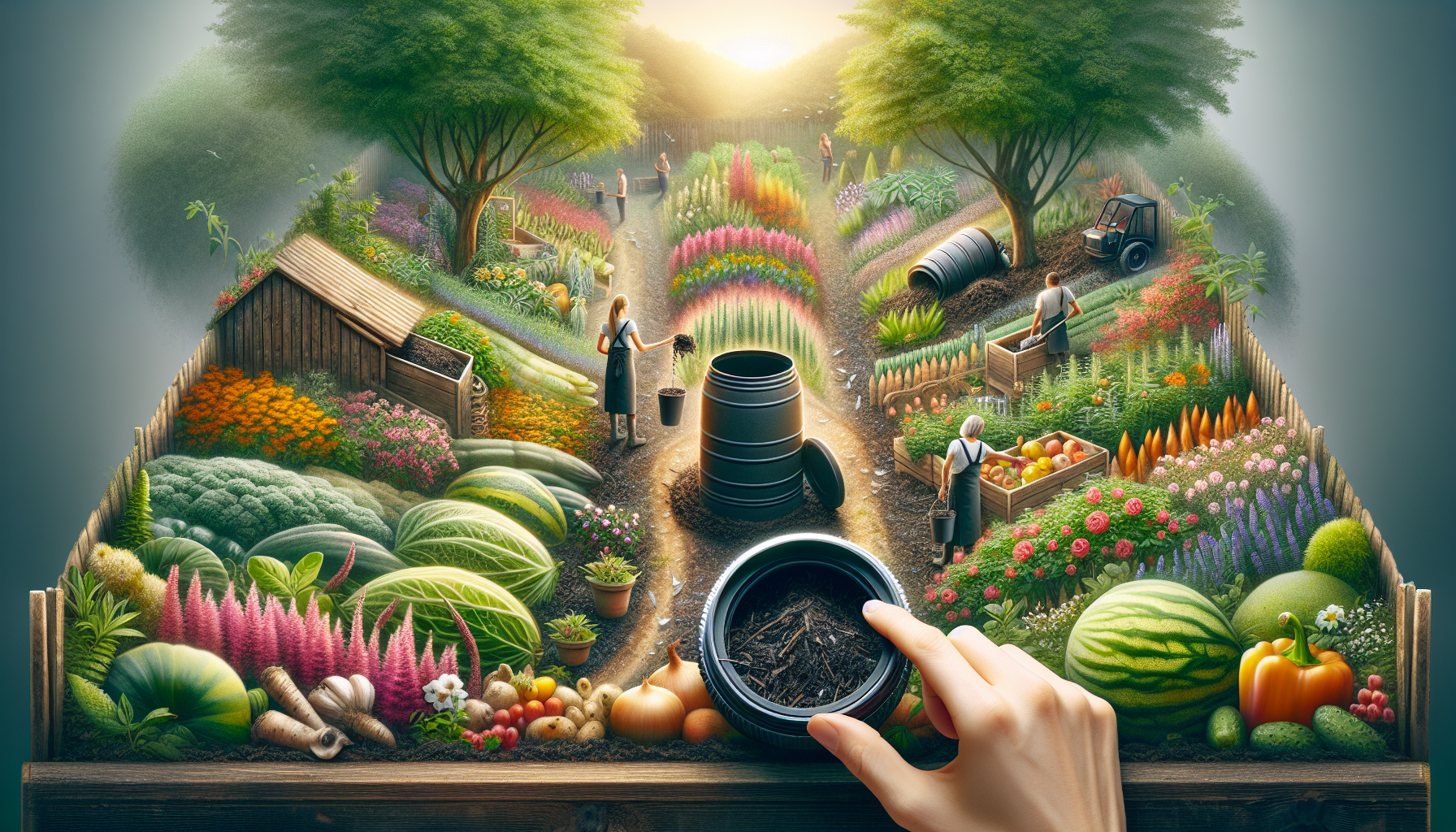Organic Gardening With Compost Tumblers: A Comprehensive Guide
Introduction to Organic Gardening and Compost Tumblers
Organic gardening is a method that emphasizes the use of natural materials and techniques to cultivate plants, steering clear of synthetic fertilizers and pesticides. One of the most effective tools in an organic gardener’s arsenal is the compost tumbler. These devices facilitate the transformation of organic waste into rich, nutrient-dense compost that can be used to improve soil health and plant growth. In this article, we’ll delve into the world of organic gardening with compost tumblers, exploring their benefits, how to use them effectively, and tips for maximizing your composting efforts.
Benefits of Using Compost Tumblers in Organic Gardening
Compost tumblers offer a multitude of advantages for organic gardeners. First and foremost, they accelerate the composting process. By allowing you to easily turn and aerate the compost, tumblers can reduce the time it takes to produce usable compost from several months to as little as a few weeks. This is a significant benefit for gardeners eager to enrich their soil quickly.
Additionally, compost tumblers are designed to be more hygienic and less odorous than traditional compost piles. The enclosed design helps contain pests and odors, making them a more neighbor-friendly option for urban and suburban gardeners. This feature is particularly important for those who wish to maintain an organic garden without causing a nuisance to others.
Another key benefit is the ease of use. Compost tumblers often come with features such as built-in handles or cranks, making it simple to turn the compost without the need for manual mixing. This convenience can be a game-changer for gardeners with physical limitations or those who simply want to spend less time on the labor-intensive aspects of composting.
How to Use a Compost Tumbler Effectively
Using a compost tumbler effectively involves a few key steps. First, you need to ensure a proper balance of “green” and “brown” materials. Green materials, such as kitchen scraps and grass clippings, provide nitrogen, while brown materials, like leaves and straw, supply carbon. A general rule of thumb is to aim for a ratio of roughly 2 parts brown to 1 part green.
Once you’ve added your materials, it’s crucial to keep the tumbler moist but not soggy. The ideal moisture level is similar to that of a wrung-out sponge. If the compost becomes too dry, it will slow down the decomposition process; if it’s too wet, it may become anaerobic and produce unpleasant odors.
Turning the tumbler regularly is another critical step. Aim to turn the tumbler at least once every few days to ensure adequate aeration. This action helps introduce oxygen into the mix, which is essential for the aerobic bacteria that break down the organic matter.
Finally, be patient. Even with a tumbler, composting is a natural process that takes time. Monitor the progress of your compost and wait until it has transformed into a dark, crumbly material with an earthy smell before using it in your garden.
Maximizing Your Composting Efforts with Tumblers
To get the most out of your compost tumbler, consider these additional tips. First, chop or shred your materials before adding them to the tumbler. Smaller pieces decompose more quickly and evenly, speeding up the overall process.
Second, keep a diverse mix of materials in your tumbler. Variety in the types of organic matter can help ensure a balanced nutrient profile in your final compost. For instance, including coffee grounds, eggshells, and vegetable scraps alongside leaves and straw can create a well-rounded compost.
Third, consider the placement of your tumbler. Position it in a spot that’s easily accessible but also partially shaded. Direct sunlight can dry out the compost too quickly, while a shaded location can help maintain the necessary moisture levels.
Lastly, if you’re serious about maximizing your composting efforts, consider using two tumblers in tandem. Fill one tumbler while the other is in the process of breaking down. This way, you’ll have a continuous supply of compost ready for your garden.
Comparing Compost Tumblers to Traditional Composting Methods
While compost tumblers offer many benefits, it’s worth comparing them to traditional composting methods to understand their place in the organic gardening world. The following table provides a side-by-side comparison:
| Aspect | Compost Tumbler | Traditional Composting |
| Speed of Composting | Faster (weeks to months) | Slower (months to a year) |
| Hygiene and Odor | More hygienic, less odor | Can attract pests, may produce odors |
| Ease of Use | Easy to turn and maintain | Requires manual turning and mixing |
| Space Requirements | Compact and self-contained | Can take up more space |
As you can see, compost tumblers have distinct advantages, particularly in terms of speed, hygiene, and ease of use. However, traditional composting methods can be more cost-effective and may be suitable for larger-scale operations or those with ample space.
Real-World Success Stories
Many organic gardeners have found great success with compost tumblers. For instance, a study on organic gardening with compost tumblers highlighted how a community garden in Portland, Oregon, was able to significantly increase its soil fertility and crop yields by incorporating tumblers into their composting routine. The ease of use and quick turnaround time allowed them to produce a steady supply of nutrient-rich compost, which they credited for their flourishing garden.
Another example comes from a suburban gardener in New Jersey, who shared their experience on a popular gardening forum. They noted that using a compost tumbler not only helped them manage their kitchen waste more effectively but also provided them with a convenient source of compost for their vegetable garden. The gardener mentioned that the tumbler’s design made it easy to integrate composting into their daily routine, leading to a more sustainable and productive garden.
Conclusion
Organic gardening with compost tumblers offers a practical and efficient way to enrich your soil and enhance your garden’s health. By understanding the benefits, learning how to use them effectively, and implementing strategies to maximize your composting efforts, you can take your organic gardening to the next level. Whether you’re a seasoned gardener or just starting out, a compost tumbler can be a valuable addition to your toolkit. As more gardeners share their success stories and research continues to support the efficacy of tumblers, it’s clear that these devices are here to stay in the world of organic gardening.

